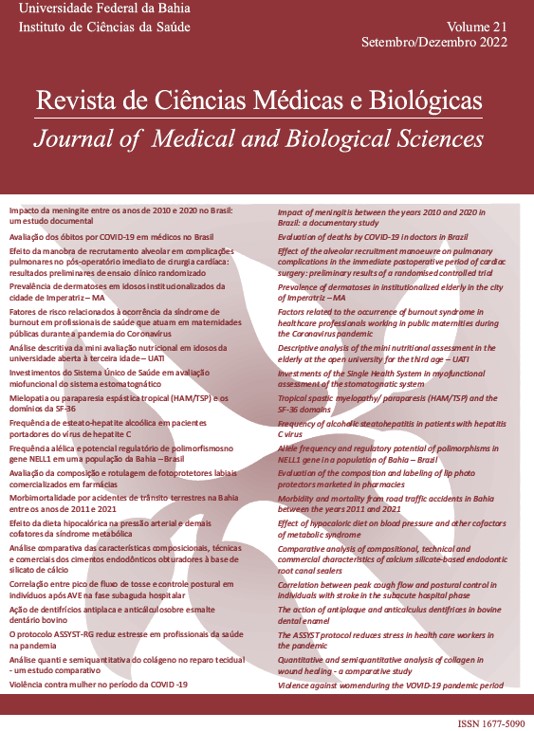Análise quanti e semiquantitativa do colágeno no reparo tecidual
um estudo comparativo
DOI:
https://doi.org/10.9771/cmbio.v21i3.51916Keywords:
Photobiomodulation, Collagen, Wound healingAbstract
Several studies highlighted the relevance of collagen in the context of wound healing, especially under the influence of different biomodulatory therapies. Collagen analysis has been performed using different methodological approaches, among which semi-quantitative and histomorphometric analyzes stand out. The present study aimed to compare the results of two methods of analysis regarding the presence of collagen fibers in the extracellular matrix during wound healing, in photobiomodulated wounds. Twenty male Wistar rats were submitted to the induction of a standardized dorsal skin wound and divided into two groups, Control (GC) and Laser Photobiomodulation (GL). The periods of death corresponded to the 5th. and 10th. days. Histological sections were stained with Sirius red for semiquantitative and histomorphometric analysis of collagen. Two parameters were used to compare the primary outcome, a quantitative magnitude criterion in percentage (collagen area), and the second semiquantitative criterion, with magnitudes conferred according to scores that varied from mild to severe. No divergent results were observed between the two types of analysis. On the 5th. day, regardless of the type of analysis, there was a statistically significant difference between the control group and the group submitted to Photobiomodulation (p<0.05), although this effect was considered small. These data suggest that both analysis methods were able to reproduce similar results, leaving the researcher to choose the one that best fits the scope of his research.
Downloads
Downloads
Published
How to Cite
Issue
Section
License
Copyright (c) 2022 Journal of Medical and Biological Sciences

This work is licensed under a Creative Commons Attribution 4.0 International License.
The Journal of Medical and Biological Sciences reserves all copyrights of published works, including translations, allowing, however, their subsequent reproduction as transcription, with proper citation of source, through the Creative Commons license. The periodical has free and free access.


